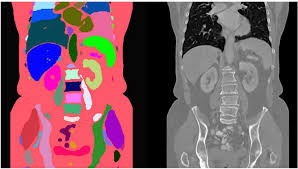AI-Generated Synthetic Medical Images:

The rise of AI-generated synthetic medical images can provide an ethical, scalable, and cost-effective solution to the medical field.
- Synthetic Medical Image is generated by AI or computer algorithms without being captured by traditional imaging devices such as MRI, CT scans, or X-rays.
- These images are entirely constructed using mathematical models or AI techniques like Generative Adversarial Networks (GANs), diffusion models, and autoencoders.
- In the medical field, synthetic medical images are created in a similar way, where the AI generates entirely new medical scans or radiological images that mimic real ones but are not derived from any actual patient data.
- A Variational Autoencoder (VAE) takes an image, compresses it into a simpler form called the latent space, and then tries to recreate the original image from that compressed version.
- The process continuously improves the image by minimising the difference between the real image and the recreated version.
- GANs involve a generator that creates synthetic images from random data and a discriminator that determines whether the image is real or synthetic.
- Both improve through competition—the generator tries to make its images more realistic, while the discriminator gets better at spotting fakes.
- Diffusion models begin with a bunch of random noise and gradually transform it into a realistic image, using a step-by-step process that slowly shapes the noise into something that resembles the images it was trained on.
- These methods generate synthetic images in various fields, including healthcare and research.




